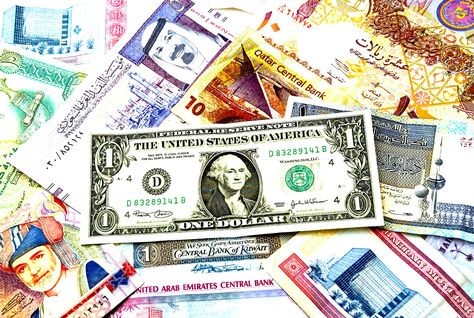GCC Sovereign wealth funds manage over USD
Post on: 11 Апрель, 2015 No Comment

GCC Sovereign wealth funds manage over USD 1.7 trillion
The total worth of all Sovereign Wealth Funds (SWFs) in the world stands at around at USD 5.3 trillion in assets under management, with GCC SWFs accounting for approximately 30 percent.
SWFs are fundamental to the GCC asset management industry and account for 88 percent of existing investable assets and 74 percent of new assets, according to the 2012 Invesco Middle East Asset Management Study. The types of so-called acceptable investments, however, vary from country to country.
GCC sovereign wealth funds
GCC sovereign wealth funds have become the primary state-sponsored financial vehicles for managing national wealth, focussing on investments with far higher potential returns than in the past.
Although their investment strategies are changing (including geographical and sectoral focus), diversification remains a key objective as countries in the region seek to reduce their reliance on oil and gas prices. Gulf SWFs have traditionally invested in a wide range of industries and high-risk assets with higher expected returns.
However, the Saudi Arabian Monetary Agency (SAMA) is an exception and known for its conservatism and unwillingness to invest in any instruments other than short-term Western government papers (holding 80 percent of its portfolio in US Treasury bonds). Due to its conservatism, SAMA has neither generated as much investment returns as other GCC funds over the past decade, nor has it lost as much after the recent financial crisis, as the other Gulf funds had.
On the other hand, Qatar Investment Authority’s (QIA) investment portfolio is much more diversified and includes stocks in first-class financial institutions and international companies covering an array of sectors, from real estate to jewellery. Qatar and the UAE also partly use assets to raise their diplomatic and media profiles.
GCC SWFs have traditionally invested in infrastructure and real estate. The proportion of infrastructure/real estate-related assets under management of GCC SWFs is likely to increase as Gulf governments redirect a greater portion of their sovereign wealth to their local markets. The shift is evident as shown in increased spending on local wages as well as on domestic infrastructure projects. According to a recent Gulf Investment House (GIH) report the value of the GCC construction market for ongoing projects has been pegged at a whopping USD 2.6 tr, with Saudi Arabia amounting for the biggest part with 36 percent of the total GCC construction market valued at USD 933 bn followed by the UAE with 31.5 percent, or USD 818 bn in ongoing projects.
According to the EU GCC Investment Report 2013. it is difficult to precisely analyse and evaluate the funds’ investments, as they are not required to openly publish or announce them.
GCC vs Norway
According to the Sovereign Wealth Fund Institute. the largest SWF in the world is the Norwegian Government Pension Fund Global (GPFG). It is worth around USD 803, 9 bn, which is expected to rise to USD 1 trillion by 2020. This huge amount is derived from revenue generated by the nation’s oil and gas assets in the North Sea. Its strategic asset allocation is relatively similar to the UAE’s Abu Dhabi Investment Authority (ADIA), although the latter’s nominal returns stood at 7.6 percent in the past decade, compared to the 4 percent made by GPFG.
GPFGs senior management team is not chosen on the basis of individual links with the ruling party in the country. Strict ethical guidelines and other investment regulations limit the influence of the members of the management team over the overall strategy of GPFG. This is in contrast with Gulf SWFs where often extreme shifts of strategy take place as a result of management changes. Another key difference between GPFG and the Gulf SWFs is transparency, achieved through public disclosure of information.
There is a large gap between GPFG and the GCC SWFs, when it comes to practising ownership rights. The majority of the GCC’s SWFs have been avoiding heavy involvement in the operation of companies in which they invest, while the Norwegians have a much more proactive approach. The only true exception, however is UAE’s Mubadala, as most of its managers have seats on the boards of different companies and are actively involved in the decision making process.
Future trends
Recent studies indicate that a large portion of SWFs investments return to the country of SWF origin, thereby strengthening their economies. While Western governments promote austerity and make radical cuts in public spending, the GCC, as well as countries like Norway, want to stimulate public spending through newly adopted strategies of employment, infrastructure projects, a focus on healthcare and introduction of new technologies.
Along with above mentioned shifts towards local investment. QIA for instance, will most likely continue to aim for trophy assets with long-term potential and strategic investment, along with investments in emerging economies in South America and Africa, with a focus on mineral exploration and extraction, according to Rajesh Menon (partner at KPGM’s Doha office).














